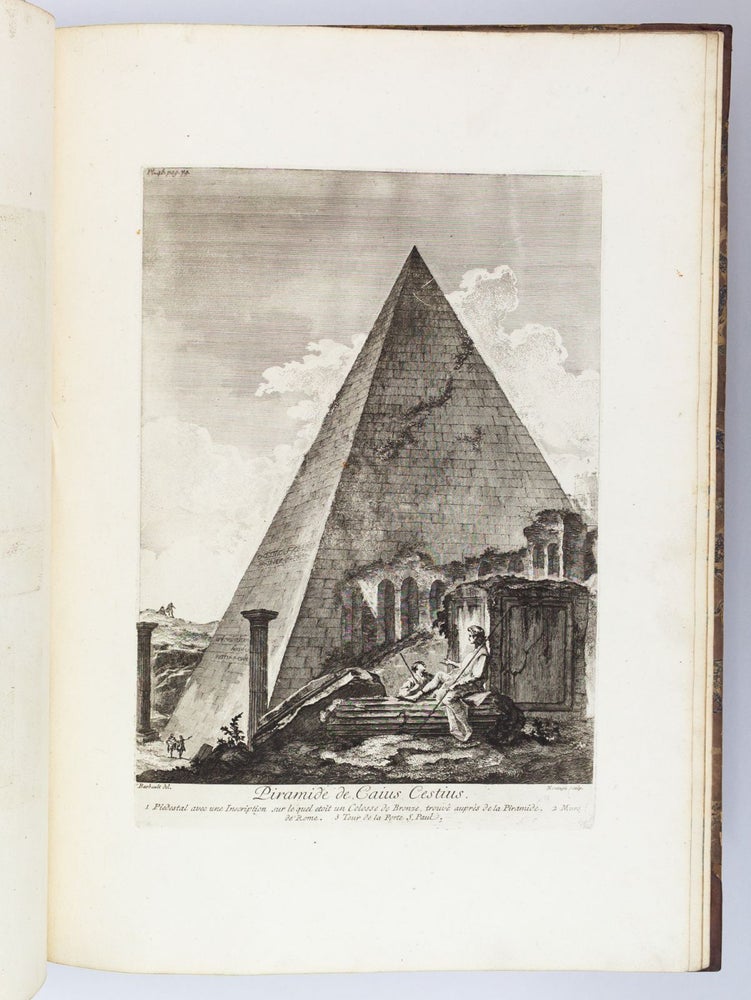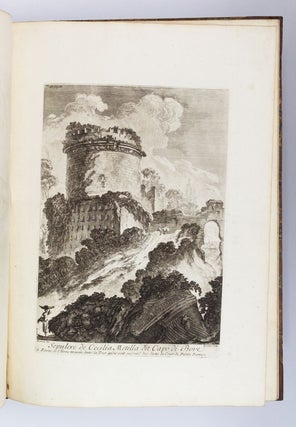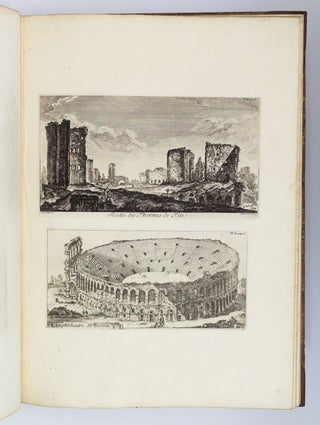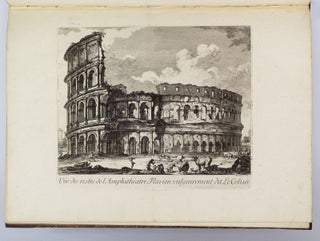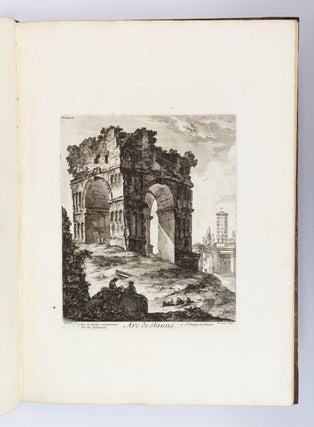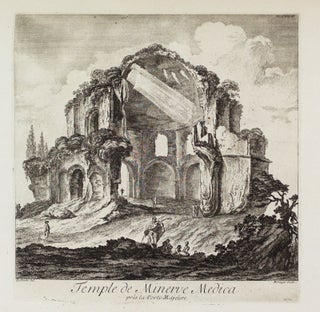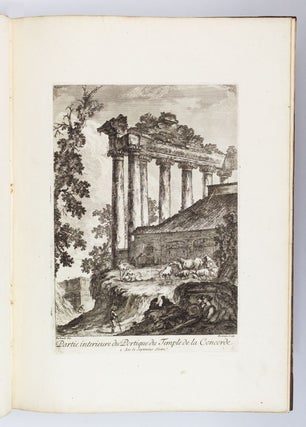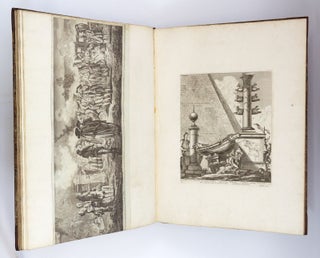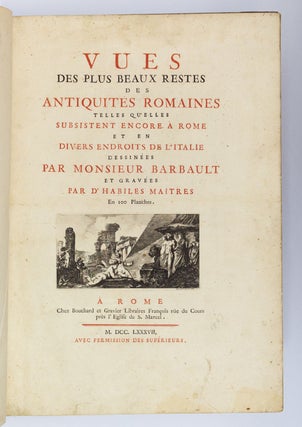VUES DES PLUS BEAUX RESTES DES ANTIQUITÉS ROMAINES.
(Rome: Bouchard et Gravier, 1787). 525 x 375 mm. (20 3/4 x 14 3/4").
Near contemporary half calf over marbled boards, smooth spine divided by gilt rules into panels with blind-stamped centerpiece, red morocco label, hinges reinforced with buckram, marbled endpapers and edges. Engraved vignette on title page and 99 COPPER-ENGRAVINGS ON 60 PLATES. A 1911 letter from the editor of "Hobbies" magazine in response to a previous owner's questions about the contents of this volume laid in at front. The plate numbered 92 with an 18th century cemetery scene pasted to the verso; rear flyleaf with two engravings pasted on. Cicognara 3595; Brunet I, 646. ◆Spine label partly missing, front joint cracked from tail edge to midpoint, head and tail of spine chipped, boards a bit chafed and with a drizzle of white paint to front cover, but the binding still solid. Occasional mild marginal foxing or finger smudges, but an excellent copy internally, fresh and clean throughout, and with pleasing impressions of engravings. Not an external beauty (as is often the case with architectural tomes), but quite attractive inside.
This is a collection of beautifully engraved plates drawn from the work of a painter and engraver who made engravings for Piranesi's 1748 "Varie vedute di Roma antica e moderna," and collaborated with him on the majestic "Le antichità Romane" (1756). Inspired by his work with the master, Barbault drew and engraved his own series of Roman views, issued in "Les plus beau monumens de Rome ancienne" (1761) and "Recueil de divers monumens anciens" (1770). The plates in the present volume are drawn from those works. Barbault's picturesque scenes are characterized by a sense of romantic decay: in some, the landscape is open and generally free from human intrusion, the once-grand ruins rising proudly from the encroaching vegetation. One has the sense of being among the first to stumble across these hidden wonders. In others, the artist juxtaposes temple remains with the shed of a contemporary farmer, a humbling contrast between past grandeur and present poverty. Jean Barbault (1718-62) had studied painting in Paris with John Restout II before receiving a scholarship from the Académie des Beaux-Arts for travel to Rome in 1721. Once there, he stayed, building a career as engraver and establishing himself with Piranesi and his circle. (ST17496-043)
Price: $3,000.00

